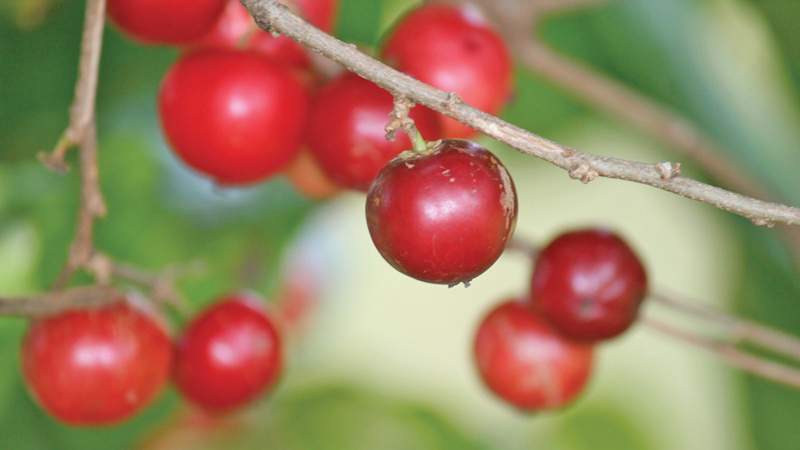The Lovi is conspicuous and eye catching as much as it is delicious. A beautiful plant, its value lies heavily in its leaves more than the fruit. Like so many of its ‘cousins’ in Sri Lanka, it too, is often ‘overlooked.’ However its medicinal properties make it a plant that must not be ignored. Garden Talk spoke to Director Institute of Indigenous Medicine Swarna Hapuarachchi on this fruit that looks good, tastes good and takes care of you.
 Swarna Hapuarachchi |
 “Lovi is an edible fruit. It is like a cherry or plum. Its botanical name is Flacourtia Inermis. It is a bushy plant. The Lovi tree looks very beautiful. This plant is native to the Philippines and it spread to African and Asian countries. The fruit has a very acidic taste. When it is immature it is green and after ripening it turns red,” said Hapuarachchi.
“Lovi is an edible fruit. It is like a cherry or plum. Its botanical name is Flacourtia Inermis. It is a bushy plant. The Lovi tree looks very beautiful. This plant is native to the Philippines and it spread to African and Asian countries. The fruit has a very acidic taste. When it is immature it is green and after ripening it turns red,” said Hapuarachchi.
The fruit can be eaten as it is, but some people even cook it. In the Philippines they prepare wine from this, because it is having an acidic and tangy taste.
“Medicinally we can use the fruits, bark, leaves and roots for some health conditions, especially for Arthritis, cough, some bacterial infections, indigestion and diarrhea. It is propagated through seeds. It is rich in Vitamin C. It is sometimes used (but not in our country) for Rheumatoid Arthritis disorders,” stated Hapuarachchi.
Still in Sri Lanka we use it mostly as a fruit. Nowadays though not popular, it is available in our villages. We can prepare jam, chutney, pickles as food products from this fruit. Wooden ornaments are prepared from this wood from the tree. For humans the whole tree is very important.
When the tree is young the leaves are reddish color and after it matures it becomes greenish. The shape of the upper part of the tree is also very beautiful.

“It is also an appetizer. The Fruit is rich in Vitamin C and has antioxidants. The fruits, leaves and bark all contain antioxidants. Fiber contents are there and it is good for the bowel movements.”
The bark and leaves are good for joint pain/arthritis and cough. The bark, leaves and roots can improve the immunity. And also the bark and leaves can be used to cure the snake bites. Leaves can be used to combat malaria and can be used to combat infectious diseases and inflammation,” explained Hapuarachchi.
But in Sri Lanka it is not used for medicinal purposes, she noted.
It can be used to jams, jellies, syrups, chutney and pickles. There are no serious pest attacks. Each fruit measures 1 to 3 centimeter in diameter. The tree nearly grows 15m.
The tree lives for more than 20 years and time to fruit is 3-5 years and the plant is thorn-less.
“It has all the Vitamins C, A, B, Thiamine, Riboflavin and Niacin which can improve the immunity. It is ideal for small children to improve their immunity,” added Hapuarachchi.
Interesting Facts about Lovi
Tribes in India have relied on the medicinal benefits of Lovi for centuries:
According to a review completed by Gopi Chand Kota at Prist University, the poor in rural India grind flacourtia seeds with powder and turmeric. This concoction is administered to women after child delivery. When rubbed all over the body, the mix is believed to reduce rheumatic pain and exposure to damp winds.
A 2010 study conducted by the American Eurasian Journal of Scientific Research found that Flacourtia leaves contain potent antioxidants, which may slow signs of aging and reduce oxidative stress responsible for degenerative diseases.
From their original home in Southeast Asia, flacourtia varieties spread to other parts of the world, including Sri Lanka, Puerto Rico, northern South America, Florida, and China. They are especially loved in the Caribbean, where locals utilize the fruit in drinks and dishes.



Add new comment